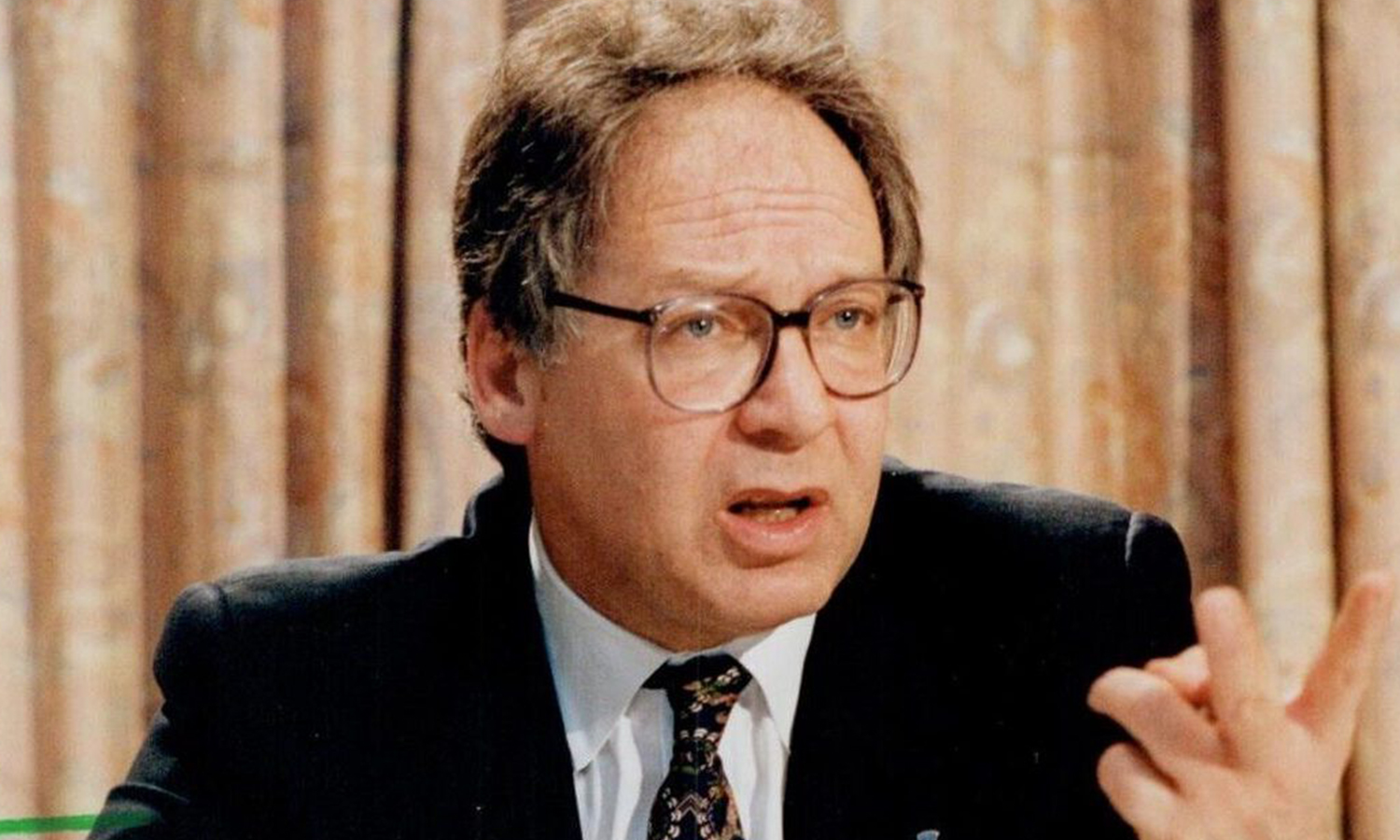Tsun-yan’s seeing ability can be traced back to Ron Oberlander, a demanding client and eventually a friend and mentor. About 15 years older than Tsun-yan, Ron would give Tsun-yan a hard time whenever he showed up with a tightly prepared PowerPoint presentation. As Tsun-yan would lead his project team through the presentation on what Ron and his company should do, Ron would interrupt and challenge him to put aside the team’s presentation and think outside the box. “What you conclude is plausible. Other explanations could also be plausible.” At first, Tsun-yan was flustered, even annoyed that Ron did not fully appreciate the rigor of the analysis and logic he and his team had worked hard to come up with. But Tsun-yan couldn’t deny that the “other” (e.g., people) factors and considerations Ron brought up were relevant and important to the positive outcomes being sought. This challenge made Tsun-yan reflect on whether his own thinking and seeing, though lauded by others, was too narrow and myopic sometimes. The thirst for truth won over pride.
Ron was able to make effective judgment and +influence in countless projects, bankruptcies, mergers, and international joint ventures across more than 15 years, in large part because of a set of principles that consistently guided his behavior. Some of these key principles that Tsun-yan has internalized into his own conduct will be illustrated in this chapter: “a conversation of possibility,” “staying loose in the saddle,” “parallel (or more complete) truths” (“If this is true, what else may also be true?”), and a “non-sequential thought process” (as opposed to a sequential argument to persuade others of a fixed preconceived position).
In every observable situation, big or small, high stakes or ordinary/low stakes, Ron practiced these principles and related behaviors because he believed they were essential to see the plethora of variables in a complex situation. In decision making, it can never be assumed that “we know what we don’t know.” Too often, though “we don’t know what we don’t know”, we make the mental leap to: assume they do not exist or don’t matter. To Ron, that over-simplification is dangerous; instead one must always proceed with an open mind in an uncertain, changing environment. “Staying loose in the saddle,” Ron says, “will keep you from being thrown off the horse!” This underlying belief makes his conduct consistent and sustainable.
Now that we have clarified the relationship between principles, norms, and the pattern of consistent behaviors called conduct, we should acknowledge the challenges of adopting principles and norms when social norms vary enough to cause consternation and possible friction with people around you. This is already the case in many developed countries, or at least certain regions within them. But the challenges need not be associated with any government or political regime; they abound in any corporate and community setting. Conventional understanding of conduct in these social settings is that behaviors are expected to comply with commonly accepted social norms.
The trouble is, as societies and corporate and community settings become increasingly heterogenous and social expectations become more ambiguous and shift unpredictably, a person’s social norms are at a higher risk of differing from those of others. For example, what is the acceptance of varying degrees of public displays of affection? In the end, for those living in complex, heterogenous developed countries, they should be conscious of the range of social norms but self-select and self-impose norms. In other words, they are aware of the range of social norms, expectations, and conventional practices but recognize they have the autonomy to adopt a set that express their beliefs and values. It will help, however, to always be sensitive to other legitimate positions of others and to learn to live peaceably with those differences.
Not every norm behind conduct needs to be potentially difficult or conflictual. An example of one of Tsun-yan’s, which is well-received everywhere, is to always bring a gift whenever he goes to someone’s home for the first time. It is an act of social grace that he chose to adopt from his mother, while fully aware that it’s not conventionally expected unless he has been invited there for a social function like a housewarming.
Ron practiced his behaviors even though it jarred the other people involved because he believed they were essential to see more of the reality and hopefully would yield +outcomes. One of Ron’s frequent sayings was, “There is always more to see and more to learn.” He’d not enter a discussion of an important matter by sitting still for a presentation of a tightly constructed, linear progression of a traditional persuasive argument that follows the rules of a situation description, a set of complications that have arisen, and thus a proposition for resolving the problems. He rejected completely the hidden assumption that the facts included in the situation and complications were all necessary and sufficient.
He’d insist on the jigsaw puzzle approach: take a piece of the jigsaw (or more likely a few pieces at the start), and have “a conversation of possibility,” discussing what it might say about the situation or complications, but holding back on landing prematurely and with finality on a solution. He would say, “If this were true, what else could also be true?” Then, the next randomly drawn piece would be introduced and examined similarly. He would also ask, “How many pieces are enough to see the pattern of the jigsaw?” Well, that depends on the complexity of the jigsaw, the capability of the discussants, and the time available before the window closes for decision and action. Like any jigsaw, one does not need to have all the pieces to conclude what the final picture is. Rather, a running hypothesis will emerge from the picture when you have enough puzzle pieces. In real life and business, “Too many pieces, and you are wasting time; too few pieces, and you risk jumping to a wrong conclusion.”
Conduct for +influence is not just about behaviors; the mindfulness with which the behavior is conducted is also essential. Consciously and purposefully. Because consciousness and purposefulness allow for the expression of the heart. It’s a simple point easily seen in a common experience of all of us. Everyone is capable of understanding from the two simple words “I’m sorry” the sincerity with which they were said. When said while conscious of the wrongdoing and purposeful in expressing regret, remorse, and intent on correcting/compensating for the wrong, the tone is totally contrite compared with a perfunctory appeasement offer. When Tsun-yan interrupts others’ well practiced, singular argument, he shares with them why he is doing this, how Ron inspired him on the importance of seeing more and differently, and his wish to help others do the same.
Proficiency is also important for conduct. Proficiency comes from repeated, deliberate practice (see Chapter 9). Not all conduct requires superlative proficiency, but mindfulness is indispensable because it conveys the being so vital to + influence. “I’m sorry” really doesn’t require proficiency, yet it is vital to be heartfelt and mindful of the feelings of the other person. Ditto when giving tough constructive feedback: how much the feedback giver cares about the feedback receiver will affect the receiver’s openness to the feedback far more than the giver’s articulateness.
Going from a jigsaw puzzle discussion of pieces to a piecing-it-together discussion without cutting off further possibility requires proficiency. Ron usually seized a juncture to have a higher-level discussion about the realm of the possible to generate interactively and iteratively the arc of the story that picks up every piece of pertinent information and weaves them into a coherent, internally consistent narrative (of the situation, problems, and likely solution). This is analogous to getting a trial balance in accounting, after assembling each pertinent piece of credit and debit entries that is material to the financial condition. After practicing his “realm of the possible” way of seeing consistently and constantly, Ron honed the skill to judge which pieces were significant to include/exclude, how to acknowledge the input of discussants, and how to remain open to other possibilities yet try for closing balance.
Consistency in conduct is not difficult to see. Don’t take a person’s declaration of principle easily; follow instead what the person does in different circumstances. Ask, does the person’s behavior vary by circumstance? A person’s character is that which guides him or her in making tough moral choices consistently, as we shall see next.
Note: This story is from chapter 16, page 266, of Positive Influence: First and Last Mile of Leadership by Tsun-yan Hsieh and Huijin Kong.




